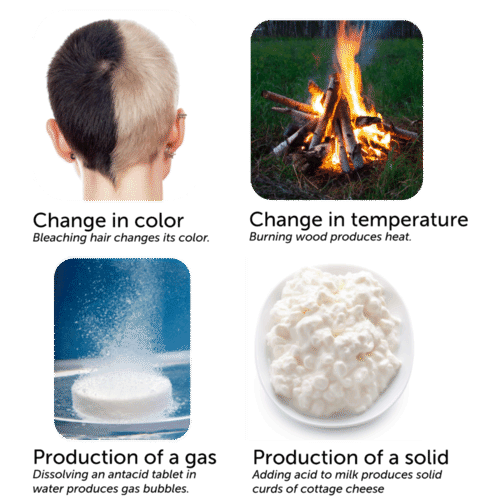What is one example of a physical change we have observed during a lab?
Separating iron from sand with a magnet
Dipping red litmus paper into acid
Crushing ice
Changing the shape/temperature of clay
What is one example of a chemical change we have observed in the lab?
Burning a stick.
Dropping an antacid tablet into water.
Mixing baking soda and vinegar.
Dipping blue litmus paper into acid.
TRUE OR FALSE: Boiling water is a physical change.
TRUE
![]() What are the horizontal rows on a periodic table called?
What are the horizontal rows on a periodic table called?
Periods
Is rust forming a chemical or physical change?
Chemical change
Define physical change.
A change to the form of matter without changing the identity.
A physical change is a change in the form or appearance of a substance, like its shape, size, or state of matter, without altering its chemical composition, meaning no new substance is created. Essentially, it's a change where the material remains the same, just looking different, like melting ice or cutting paper.
Define chemical change.
A chemical change occurs when one or more substances change into an entirely new substance with different properties.
TRUE OR FALSE: All color changes are chemical changes.
FALSE
Color changes can be a physical OR chemical change. A color change can sometimes be a physical change, like when mixing different colored paints, where no new substance is formed, just a visual change in color.
What are the vertical columns on a periodic table called?
Groups
TRUE OR FALSE: Rust has different properties than its original metal.
TRUE
When a piece of paper is torn into smaller pieces, it undergoes this type of physical change. (What property of the paper changed?)
A change in shape or size
In a chemical reaction, bubbles signal the formation of what kind of new substance? (Hint: it is a state of matter)
A gas
TRUE OR FALSE: Melting and dissolving are the same thing.
FALSE
Melting is a physical change from a solid to a liquid state due to temperature. Dissolving is a physical mixing of a solid and a liquid.
Do groups or periods contain elements with similar properties?
Groups contain elements with similar properties.
_____ is the reaction of metals with substances in their environment, such as rusting.
Corrosion
What part of eating is a physical change?
Chewing
What part of eating is a chemical change?
Digesting
TRUE OR FALSE: The molecules of solids are big and the molecules of gases are small.
FALSE
Even though a substance’s appearance may change with its state, its molecules do not change. Molecular shape, size, and mass stay the same across states of matter.
What is the periodic table organized by? (Hint: It is a number)
Atomic number
Which metal element is most often associated with rusting?
Iron

What are three examples of changes in state of matter, and what are the definitions of all three?
Evaporation: the process of turning from liquid into vapor
Condensation: water vapor cools down and turns back into liquid water
Solidification/freezing: substance becomes a solid from a liquid state
Melting: a substance changing from a solid to a liquid due to heat
What are three examples of evidence that a chemical change occurred?
Production of a gas
Production of an odor/smell
Formation of a precipitate/solid
Change in color
Change in energy
TRUE OR FALSE: Not all physical changes are reversible.
TRUE
While many physical changes like melting ice can be reversed, some, like breaking glass or tearing paper, cannot.
What are the three properties rare-earth elements are known for?
Fluorescence, magnetism, and conductivity
What is the name of the compound of rust?
Iron oxide (the reaction of iron and oxygen in the presence of water)
